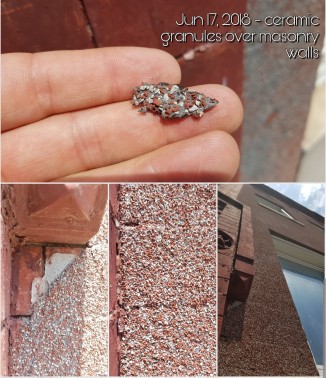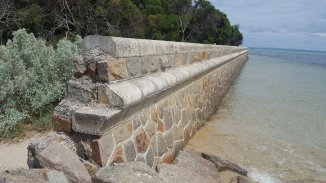Recently, while visiting a client’s house we looked at these side facade. The houses is an end lot so there is a yard beside the house and that side wall is a largely contiguous uninterrupted brick wall. Along the bottom of the wall there are a few spots where bricks have spalled. Upon closer examination, we could see that the fracture line in the brick was directly coincident with where the brick had been pointed in reason years by some other contractor before the client of mine bought the house. The previous contractor used a modern mortar instead of a softer motor.
The bricks are historic and they are a common brick so they are particularly soft and have a low PSI strength. In this case the new modern mortar is much harder then the bricks and it in the case of the picture below you can see that the brick has spalled directly in line with where the new mortar entered into the mortar joint.
Buildings move. Sometimes that movement is very small and just the tiniest about. Imagine over a 30′ tall wall the building moves just a millimeter in the time that it takes the building the heat up an additional 50゚. It doesn’t have to be that much but the wall is so hard and heavy overall that when the soft bricks move with new hard mortar between them it can cause the face of the brick to crack and in this case the brick face spalled or cracked directly off. It’s a perfect example because the remainder of that face of the brick stayed completely in tact.






















